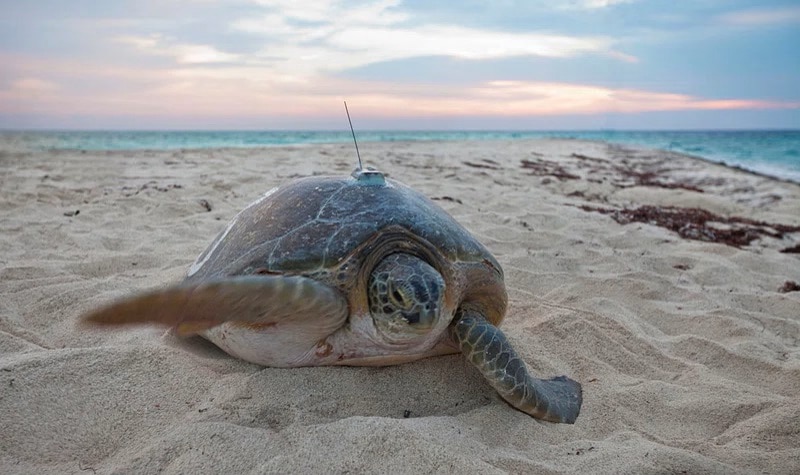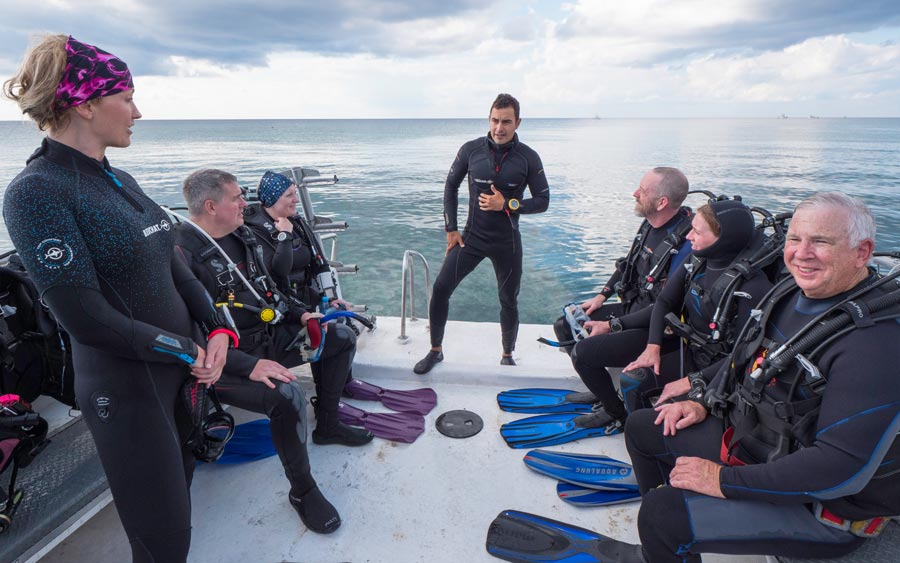In the heart of the Caribbean, the keyword is “conservation,” and its application becomes imperative when it comes to sea turtles. These fascinating ocean inhabitants, essential for the balance of our seas, face threats that demand decisive action. The conservation of sea turtles becomes an urgent call, where every gesture counts, and every individual can be a crucial actor. This article aims to be a vehicle that takes us from awareness to action in preserving sea turtles in the paradise-like environment of the Caribbean.

Reef Diving with Dressel Divers
31/01/2024
Advanced Diving Medicine and Emergency Response
14/02/2024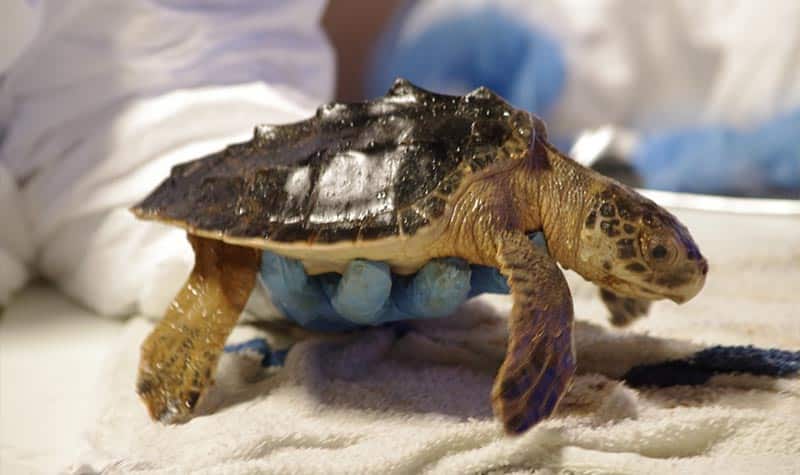
1. Conservation of Sea Turtles Importance
Have you ever wondered about the role sea turtles play in the health of our oceans?
Don’t blame yourself if you haven’t. When you encounter a sea turtle while diving, you are mesmerized by its beauty and intelligence, but they are much more than a sight during a dive. They are vital to the balance of marine ecosystems. Their presence helps regulate marine food webs and facilitates nutrient cycles, ensuring the health of our oceans. They are responsible for seed dispersal and improving the health of seagrass. Additionally, by feeding on jellyfish, they help control their population.
All of this, not to mention the economic value of turtles.
But should we be concerned about sea turtle conservation? The truth is, yes. There are 7 species of sea turtles in our oceans: the green turtle, hawksbill turtle, loggerhead turtle, leatherback turtle, olive ridley turtle, and Kemp’s ridley turtle. A seventh, the eastern Pacific leatherback turtle, lives in the waters of Australia.
Well, all of them are in danger. Considering that this is an animal with over 100 million years of existence on this planet, this fact says a lot about the state of the environment.
Their decline serves as a warning signal, indicating possible repercussions for humanity. A world where sea turtles cannot survive could soon become a world where humans also face unprecedented challenges.
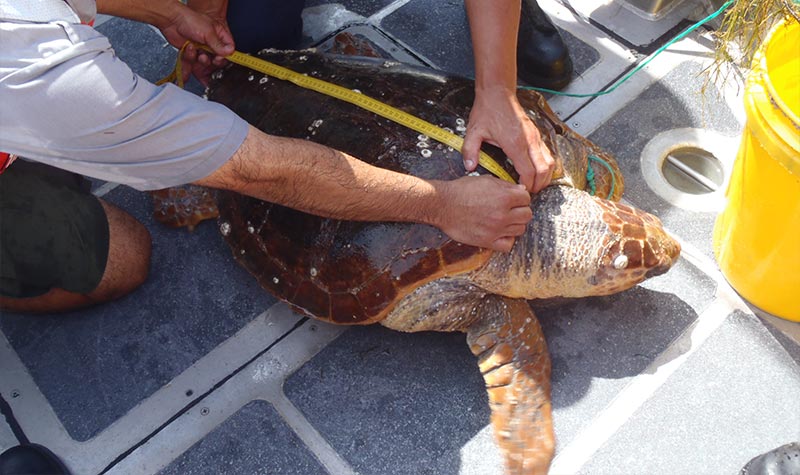
2. Threats to Sea Turtles
Only one in every 1,000 or 10,000 hatchlings will reach adulthood. Surprisingly, although they face natural obstacles, it is human threats that pose the greatest danger to them.
Nesting Difficulties
Turtles need dark and quiet beaches to nest successfully. Excessive lighting related to artificial light can discourage females from nesting and confuse newly hatched turtles. On the other hand, walls and coastal structures are disrupting turtle nesting sites. Allowing tourist activities on nesting beaches during the nesting season disturbs females and affects the survival rate of hatchlings.
Consumption of Turtles and Eggs
In many coastal communities, sea turtles are hunted during the nesting season, both for their eggs and meat. Although it is prohibited in some places, in others, the enforcement of these laws leaves much to be desired.
Illegal Shell Trade
Hawksbill turtles are famous for their beautiful shells. But their blessing is their curse. The hawksbill turtle population has decreased by 90% in the last 100 years because they are hunted for jewelry and other items.
Fishing Nets
Every year, hundreds of thousands of sea turtles are accidentally caught in fishing nets worldwide. According to global estimates, the figures are staggering: 150,000 turtles killed in shrimp nets.
Using the Sea as a Dump
It is estimated that over 100 million marine animals die each year due to plastic pollution in the ocean. Turtles mistake plastics for jellyfish (their favorite food).
On the other hand, water pollution, including oil spills and chemical waste, affects both turtles and their food sources.
Climate Change
The temperature of the sand conditions the number of males and females born. The hotter the sand, the more females are born. Sea turtles evolved to reproduce at specific times of the year, ensuring a perfect balance between males and females. In 2018, scientists from the US National Oceanic and Atmospheric Administration in Hawaii discovered that on Raine Island, Australia, the sand temperature rose so much that female turtle hatchlings outnumbered males by 116 to 1!
And it’s not the only effect climate change has on them. Hurricanes and tropical cyclones are putting their homes in jeopardy, flooding their nests, and eroding beaches. And if that’s not enough, rising sea levels reduce their nesting territory.
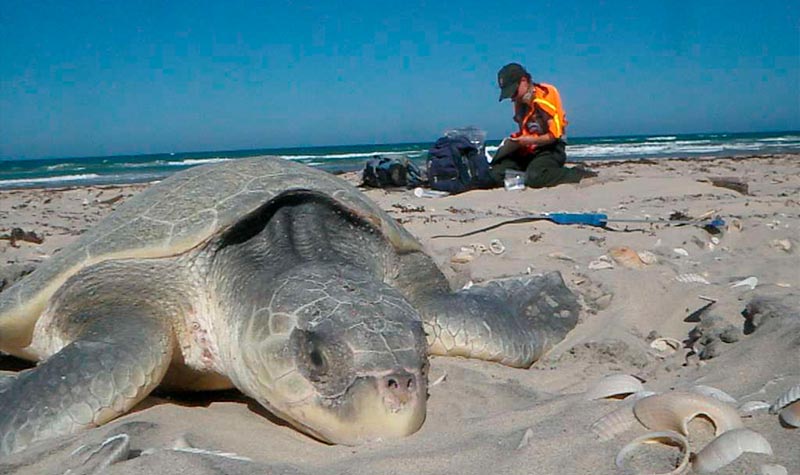
3. Everyone Can Support Sea Turtle Conservation
Sea Turtle Conservation Actions
- Support Local Conservation Projects: Many sea turtle conservation projects are managed by local communities. We’ll discuss what’s being done in the Caribbean in a few lines.
- Reduce Plastic Waste: Decrease your plastic consumption and join beach cleanups. A small gesture can make a difference. Are you up for it?
- Protection of Nesting Beaches: Preserve nesting beaches by establishing disturbance-free parks and shelters. This can only be done with regulations understood by the public; therefore, they must be accompanied by public education. Our role is to respect the protection law and explain its purpose to those who may not know it.
- Enforcement of Laws: Let’s enforce national and international laws to minimize pollution in oceans and coastal waters. A clean ocean is a happy home for turtles.
- Combat Illegal Trade: Strong measures are needed against the illegal trade of sea turtles and their products. Let’s support the enforcement of laws and agreements that protect these creatures, and let’s not consume products made from turtles.
- Commercial Fishing Regulation: Support the implementation of regulations on Turtle Excluder Devices (TEDs). These are devices installed in shrimp trawl nets, designed to divert turtles toward an escape route to prevent them from getting trapped.
- Scientific Monitoring: To better understand the turtle population, their behaviors, and their routes. This way, we can, for example, keep fishing activities away from them.
- Follow the code of conduct for sea turtle conservation.
Code of Conduct for Sea Turtle Conservation
We know you’re excited to dive into the crystal-clear waters and explore the treasures the sea has to offer. But before you fully immerse yourself, there are some rules you must follow to ensure the conservation of sea turtles.
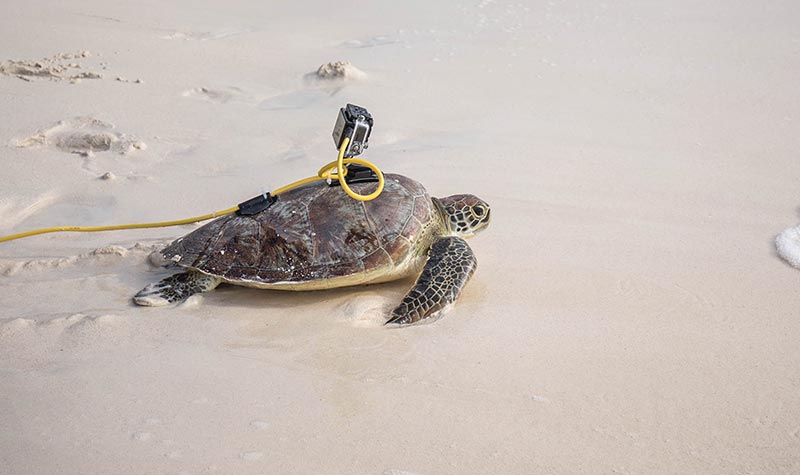
Tips to protect turtles during nesting:
- Keep your distance: when you see a turtle coming ashore, maintain your distance, turn off any lights, and stay still and crouched to avoid scaring her. Don’t get closer!
- Avoid loud noises: turtles appreciate tranquility, so keep the volume low.
- Turn off bright lights: they can distract turtles, making it difficult for them to find their way to the water. Don’t shine a flashlight on a turtle’s face!
- Don’t take flash photos: give turtles space and avoid using flash when photographing them.
- Don’t walk in front of the turtle: approach carefully from behind after she has started laying her eggs.
- Don’t step on hatchlings on the beach. Don’t touch or try to take them! If you find disoriented hatchlings, gently turn them toward the ocean and seek professional help if necessary.
- Don’t touch the female turtle: if she seems to be in distress, help her return to the ocean or seek professional help.
How to swim with turtles without disturbing them:
- Be silent: when approaching a turtle in the water, do so quietly. Loud noises can scare them, especially for snorkelers.
- Don’t interrupt their natural behavior: observe and enjoy without disturbing them!
- Be silent: when approaching a turtle in the water, do so quietly. Loud noises can scare them, especially for snorkelers.
- Don’t interrupt their natural behavior: observe and enjoy without disturbing them!
- Always approach from the side: this gives them a clear view of you and a clear path if they want to swim away.
- Don’t get too close: turtles can give powerful bites.
- Don’t chase the turtle: this can cause severe stress! And please avoid swimming directly over them; remember, they are reptiles and need to reach the surface to breathe.
- Don’t try to feed them: they don’t need your help finding food, and they might accidentally bite you.
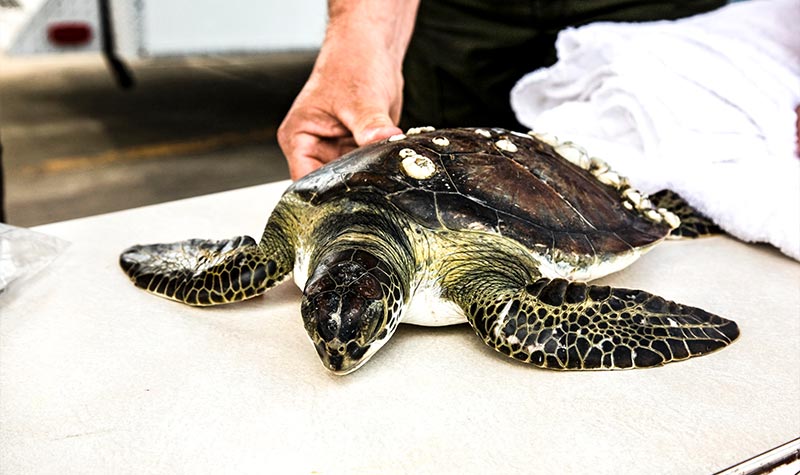
4. Divers and Sea Turtle Conservation
As divers, we can be true ocean heroes and contribute to the conservation of sea turtles.
Responsible Diving: When underwater, follow best practices for diving near sea turtles. Avoid disturbing or disrupting their aquatic homes. Remember, we are sharing their space.
- Stay vigilant: If you encounter a turtle while diving, observe it closely to understand its actions and avoid disturbing it.
- Don’t disturb resting turtles: Maintain a distance of 1.5 meters (no closer).
- Stay still: If a turtle approaches while you’re immobile, avoid sudden movements.
- Give them space: When encountering turtles resting in caves or under ledges, be careful to give them enough space to surface and breathe.
Discover and Share: Immerse yourself in the fascinating world of sea turtles. Learn their stories, and challenges, and share that knowledge with your fellow divers. Together, we can raise awareness about sea turtle conservation!
Support Big: Join sea turtle conservation programs. You can be part of this in many ways: volunteer, make donations, or even contribute to turtle monitoring by reporting your encounters with them. You can also contribute to sea turtle conservation initiatives.
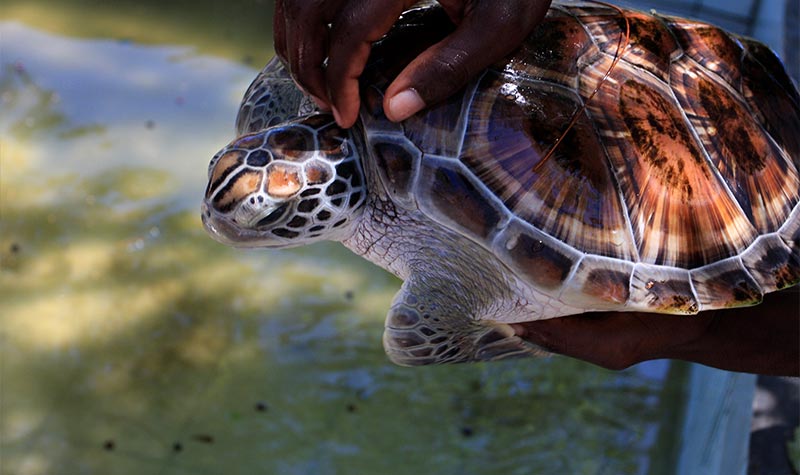
5. Sea Turtle Conservation Initiatives in the Caribbean
WIDECAST, short for Wider Caribbean Sea Turtle Conservation Network, is a Caribbean Sea turtle conservation network composed of experts residing in over 40 countries determined to contribute their advice to decision-making for sea turtle conservation.
The World Wildlife Fund (WWF) has outlined an Action Plan for Sea Turtle Conservation in the Caribbean and Latin America. Your role? Be part of this mission, collaborate, and ensure that sea turtles have a future full of waves and currents.
National Program for the Conservation of Sea Turtles in Mexico. According to this program, sea turtle conservation is mainly carried out in so-called turtle camps of the National Commission of Natural Protected Areas (CONANP).
Let’s jump to Jamaica, where, in addition to the conservation initiatives of the Jamaica Environmental Trust (JET), which has executed various conservation actions such as training fishermen, and forming community associations to monitor sea turtle nesting, we find the strategy for Sea Turtle Recovery in Jamaica. This plan aims to implement scientifically sound programs for sea turtle conservation.
In the Dominican Republic, since 1994, the Punta Cana Foundation has been on the front lines, working with volunteer heroes to monitor beaches, identify hawksbill turtle nests, and release thousands of small turtles.
On the other hand, on Saona Island, there is a turtle sanctuary dedicated to the conservation of three sea turtle species: the leatherback turtle, the green turtle, and the hawksbill turtle. By visiting this place, you are part of something bigger, something beyond a simple vacation.
So, the next time you dive into the turquoise waters of the Caribbean, remember that you are more than a tourist. You are an ocean guardian contributing to the conservation of sea turtles!



